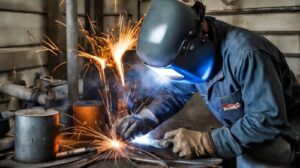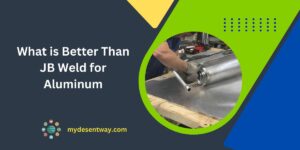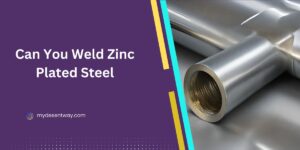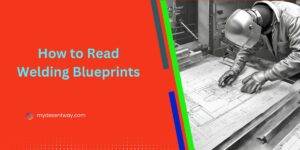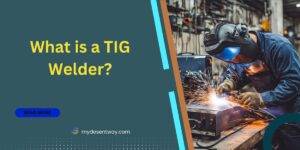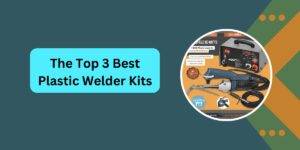Table of Contents
Ah, the sizzle of welding! It’s a craft that sparks the imagination and ignites the passion of DIY enthusiasts and professionals alike. But wait, can you weld zinc plated steel? That’s the burning question buzzing in many minds.
Fear not, fellow welders! In this guide, we’ll explore the ins and outs of welding zinc plated steel, unraveling the mysteries, and providing you with the know-how to tackle this task like a pro. So, grab your helmet, don your gloves, and let’s dive into the world of welding zinc plated steel!
Understanding Zinc Plated Steel
Before we jump into the welding process, let’s grasp the basics of zinc plated steel.
Zinc plated steel is steel coated with a thin layer of zinc to enhance its corrosion resistance. This plating serves as a protective barrier, shielding the steel from rust and oxidation. However, when it comes to welding, the zinc coating poses certain challenges.
Unraveling the Mystery: Can You Weld Zinc Plated Steel?
Welding zinc plated steel may seem like a daunting task, but fear not! With the right approach and precautions, it can be done safely and effectively. Let’s break it down:
Yes, You Can!
Contrary to popular belief, welding zinc plated steel is indeed possible. However, it requires careful consideration and adherence to specific techniques.
The Process
Welding zinc plated steel involves a meticulous process to ensure a strong and durable bond without compromising safety.
- Preparation is Key
- Begin by thoroughly cleaning the zinc plated steel surface to remove any contaminants or impurities. Use a wire brush or sandpaper to eliminate the zinc coating around the welding area.
- Ensure proper ventilation in the workspace to prevent inhalation of zinc fumes during welding.
2. Select the Right Welding Method
- Opt for welding methods that generate minimal heat input, such as TIG (Tungsten Inert Gas) or MIG (Metal Inert Gas) welding.
- These methods help prevent the vaporization of zinc, reducing the risk of zinc fume fever and ensuring a strong weld.
3. Use a Fume Extractor
- Employ a fume extractor or welding hood equipped with a ventilation system to effectively capture and remove zinc fumes from the air.
- Prioritize safety by wearing appropriate personal protective equipment, including a respirator, to prevent inhalation of harmful fumes.
4. Monitor Welding Parameters
- Maintain precise control over welding parameters, such as current, voltage, and travel speed, to prevent excessive heat buildup and minimize zinc vaporization.
5. Post-Welding Treatment
- After welding, conduct a thorough inspection of the weld joint to ensure its integrity and strength.
- Consider applying a zinc-rich primer or coating to the welded area to restore corrosion resistance and protect against future oxidation.
Safety Precautions
Welding zinc plated steel demands utmost caution to mitigate health risks associated with zinc fume exposure.
- Always weld in a well-ventilated area or utilize local exhaust ventilation systems to remove airborne contaminants.
- Wear appropriate respiratory protection, such as a respirator with a P100 filter, to safeguard against inhalation of zinc fumes.
- Implement good hygiene practices, including regular handwashing and avoiding touching your face while handling zinc plated steel or after welding.
FAQs:
Still puzzled about welding zinc plated steel? Let’s address some frequently asked questions!
Can you weld zinc plated steel without removing the coating?
While technically possible, it’s not recommended to weld zinc plated steel without removing the coating. Welding over the zinc coating can lead to the release of harmful zinc fumes and result in poor weld quality.
What happens if you weld zinc plated steel?
Welding zinc plated steel can produce zinc fumes, which, when inhaled, may cause symptoms such as fever, chills, headache, and nausea. Additionally, welding over the zinc coating can result in weld contamination and poor adhesion.
How do you remove zinc plating before welding?
To remove zinc plating before welding, use a wire brush, sandpaper, or chemical stripping agents to eliminate the zinc coating from the welding area. Ensure thorough cleaning and proper ventilation to minimize the risk of zinc fume exposure.
Conclusion
And there you have it, folks! Welding zinc plated steel is indeed possible with the right approach and precautions. By understanding the properties of the material, following proper welding techniques, and prioritizing safety, you can tackle this task with confidence. So, roll up your sleeves, fire up your welder, and embark on your next welding adventure with zinc plated steel! Remember, safety first, weld second. Happy welding!

